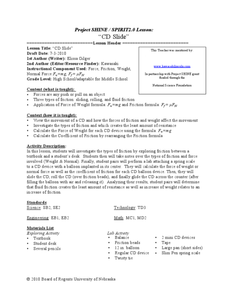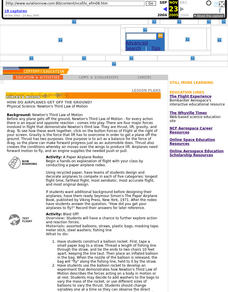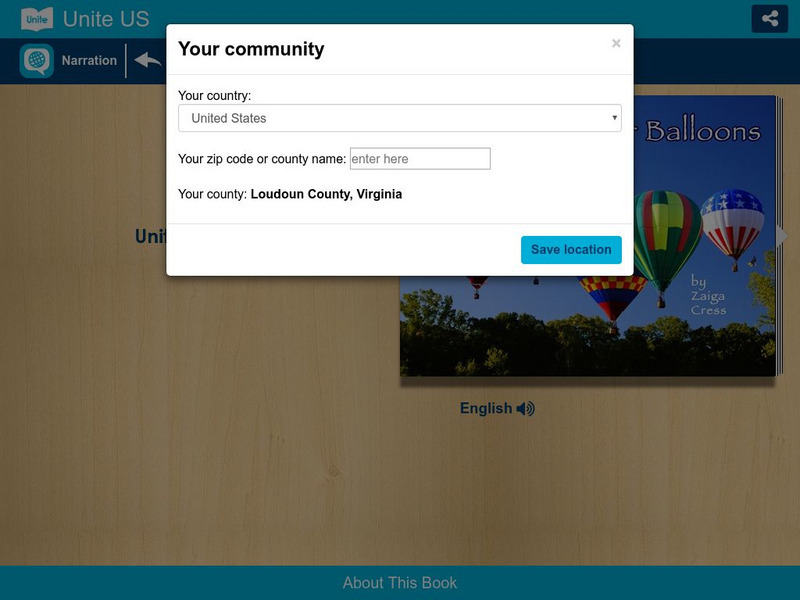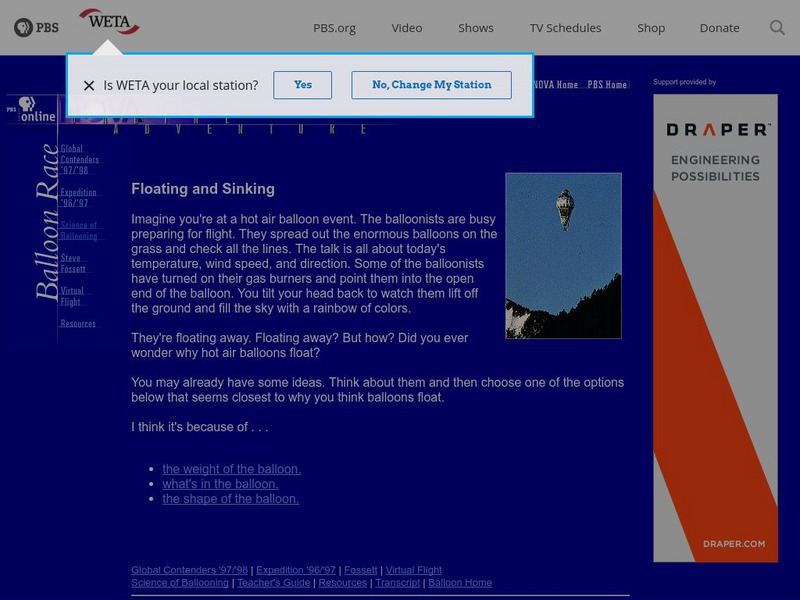Curated OER
Astrophysics Science Project Integrating Research and Education
Pupils determine if the particles are coming from above, below, or from one side or the other by using a circular array of scintillators
Curated OER
Stayin' Alive
Students pick an object of their choice based on their ability to kick. The object is not to touch the ground. Group sizes vary within the activity.
Curated OER
What is Temperature and How Is It Measured?
Students complete activities to measure temperature. In this temperature lesson, students read Geoffrey Groundhog Predicts the Weather and make a KWL chart about predicting weather. Students discuss folklore about temperature and learn...
Curated OER
Wind
Fourth graders watch an experiment that demonstrates the causes of wind. They design and make an original weather craft.
Curated OER
CD Slide
Young scholars identify the different types of friction. For this physics lesson, students explain how weight affects friction. They calculate normal force and coefficient of friction using a mathematical formula.
Curated OER
From Big to Little, From Little to Big
Students discuss how different objects are different sizes. They work together to brainstorm ideas of objects that do not stay big or little all of the time. They choose one of their ideas to illustrate and share with the class.
Curated OER
Don't Marry the Mole!
Third graders examine the power of solar energy. In groups, they create their own pizza box solar oven to discover the power of the sun and how it is a source for heat and light. To end the instructional activity, they use the internet...
Curated OER
How Do Airplanes Get Off the Ground
Students construct various types of paper airplanes, exploring action and reaction forces by conducting a paper airplane rodeo. Students then discuss how Newton's Third Law of Motion affected their planes.
Curated OER
Investigation 6 - Collecting Weather Data
Fourth graders collect data for two weeks. They start seeing patterns and make predictions. They can predict what the weather be like the next day and for the next few days. They see if their predictions were correct from the previous day.
Curated OER
Facts of Matter
Young scholars make group decisions about matter as they explore and interpret many types.
Curated OER
The Mystery of the Sponge
First graders observe while water is absorbed into a sponge. They experiment by putting a sponge on yardstick and watch while water dries and the weight changes.
Curated OER
Prefixes Crossword Puzzle
In this prefix worksheet, students use word clues to solve a crossword puzzle. Prefixes of words in puzzle are given, and students complete the words using the clues.
Curated OER
Prefixes Crossword (1)
In this prefix worksheet, students complete the crossword puzzle for words that have prefixes. Students solve the clues to complete the crossword.
Curated OER
Putting Sentences in Order
In this sentence order worksheet, students read the sentence examples in each box. Students order the sentences and write the sentence letters in order. Students complete 5 examples.
Curated OER
Phases of Matter
Students describe the motion of solids, liquids and gases. In this chemistry lesson, students describe how temperature affect motion of the particles. They determine the physical properties of each phase.
Curated OER
Physical and Chemical Changes
Eighth graders distinguish between physical and chemical change. In this chemistry instructional activity, 8th graders observe a series of demonstrations showing physical and chemical changes. They identify the signs that a chemical...
Unite for Literacy
Unite for Literacy: Technology: Fly High, Hot Air Balloons
A book about a hot air balloon festival. Includes audio narration in 15 additional languages with text in English.
Science Buddies
Science Buddies: Up, Up, and Away in Your Own Hot Air Balloon!
In this science fair project, students will make hot-air balloons using a toaster and dry-cleaning bags, and see how the size of the balloon affects its flight. The Science Buddies project ideas are set up consistently beginning with an...
PBS
Pbs Learning Media: Floating and Sinking: Hot Air Balloons
Why do hot air balloons float? This resource from the NOVA Web site offers a series of interactive activities that illustrates the physics of hot air balloons.
Museum of Science
Museum of Science and Industry: Activities: Fly a Hot Air Balloon
Step-by-step instructions, with photos, of how to construct a hot-air balloon from tissue paper, to demonstrate that heated air expands, creating a convection current. This activity requires the use of a hot air gun and is labor-intensive.
CK-12 Foundation
Ck 12: Physics Simulation: Hot Air Balloon
[Free Registration/Login Required] Learn about Newton's 2nd Law - the relationship between force, mass, and acceleration for a hot air balloon using this interactive simulation. A PDF worksheet and a video tutorial are also available....
Other
U.s. Centennial of Flight Commission: Balloons in the American Civil War
What role did hot air balloons play in the Civil War? This comprehensive article answers that question and gives specific examples of their use by both the Union and Confederate troops.
Library of Congress
Loc: Full of Hot Air
Did you know that the hot-air balloon is the oldest form of successful human flight? Briefly described is the history and construction of hot-air balloons. Follow the link to "images of hot-air balloons and balloon racing" to view...
Other popular searches
- Hot Air Balloons
- Art Hot Air Balloons
- Cleaning Air With Balloons
- Innovation Hot Air Balloons
- Hot Air Balloons Preschools
- Hot Air Balloons Albuquerque
- Hot Air Balloons
- Balloons Air Density

























